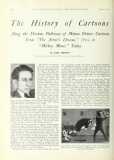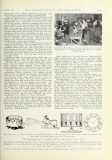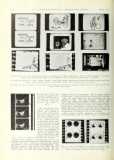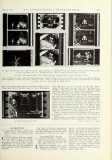



The history of animated cartoons as a practical form of amusement dates from the announcement of the first J. R. Bray cartoon, "The Artists Dream", released by Pathe on June 12, 1913. Some say this cartoon was called "The Dachshund", because the central character was a German dachshund. Wallace Glendenin remembers seeing this picture at Clune's Theatre in 1913; while not remembering the exact title, he recalls the picture left him and the audience near a hysterical mood from laughter. This, while not the first of the animated cartoons, is the forerunner of the cartoon vogue and from it dates the cartoon technique as it is today. This cartoon is the first whose sole purpose was comedy.
Before photography was available for motion picture work, it will be recalled various men had tried to draw pictures in motion by drawing in cartoon form the necessary successive pictures, after which they were shown intermittentliy to the eye in small toy-like devices. Joseph A. F. Plateau, who made a device which had two discs that revolved on the same shaft was the first to employ a series of hand drawn pictures. The pictures were drawn around the outer edge of a rear disc while the front disc had a series of slits in its outer rim. It was first made in 1831, and was known as the "Phenakistoscope."
[…]
Skipping lightly over the years to the first of the sound era, we find Walt Disney busily engaged making his first Micky Mouse. The first cartoon to be made in sound was the Micky Mouse picture, "Steamboat Willie" first shown on September 19, 1928 at the Colony Theatre in New York. There had been one earlier Micky Mouse, "Plane Crazy" although it was released later with sound. From the first Micky Mouse was an instantaneous hit, his popularity increasing with the years to where, now, he is far beyond the challenge of the screens' greatest character. He is the first screen character to command the attention of the so-called intelligentsia, who have always regarded the motion picture as an upstart art. Now, this class of people go to see pictures for the cartoons. Disney had his introduction in cartoon making in St. Louis when he made a series of "Laugh-O-Grams" in 1921. In October, 1923, he and his brother came to Hollywood and started the "Alice Cartoons" which were a combination of real life characters and cartoons.
[…]